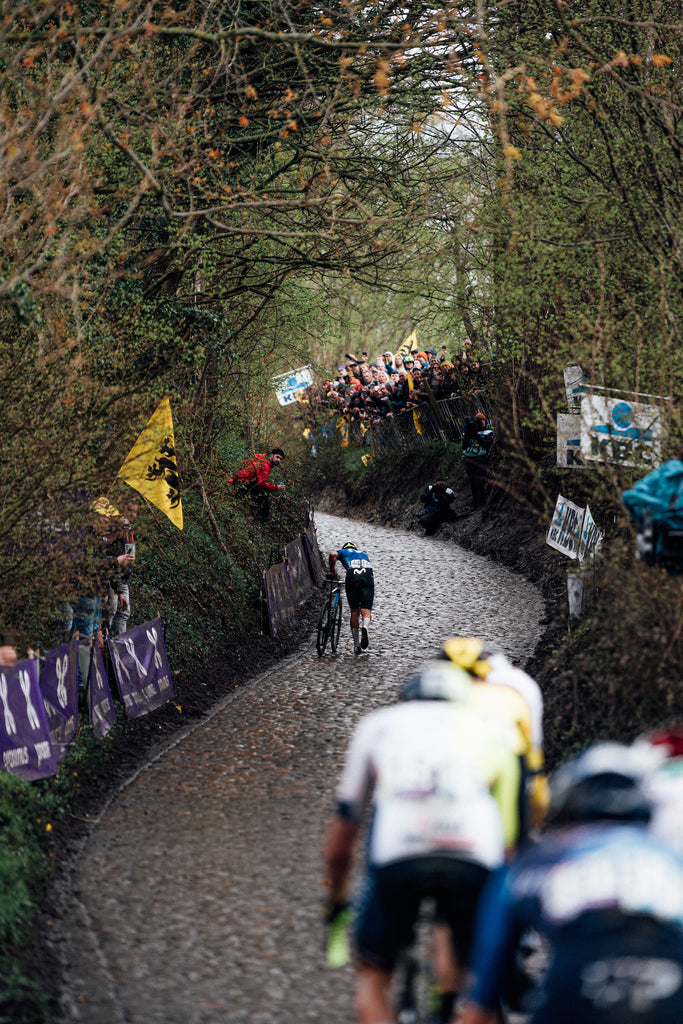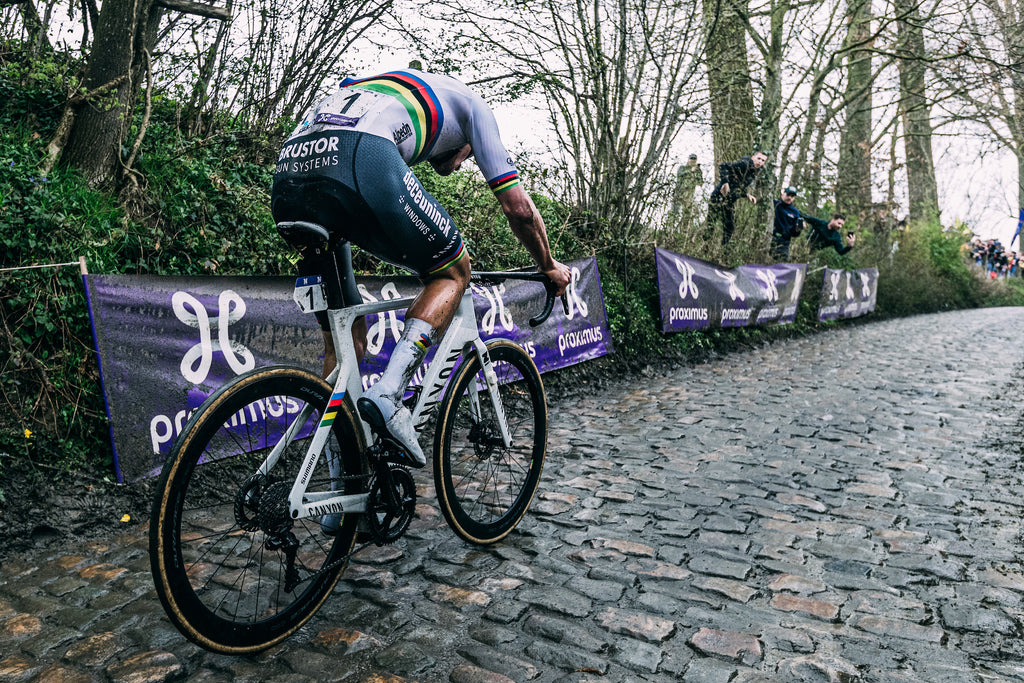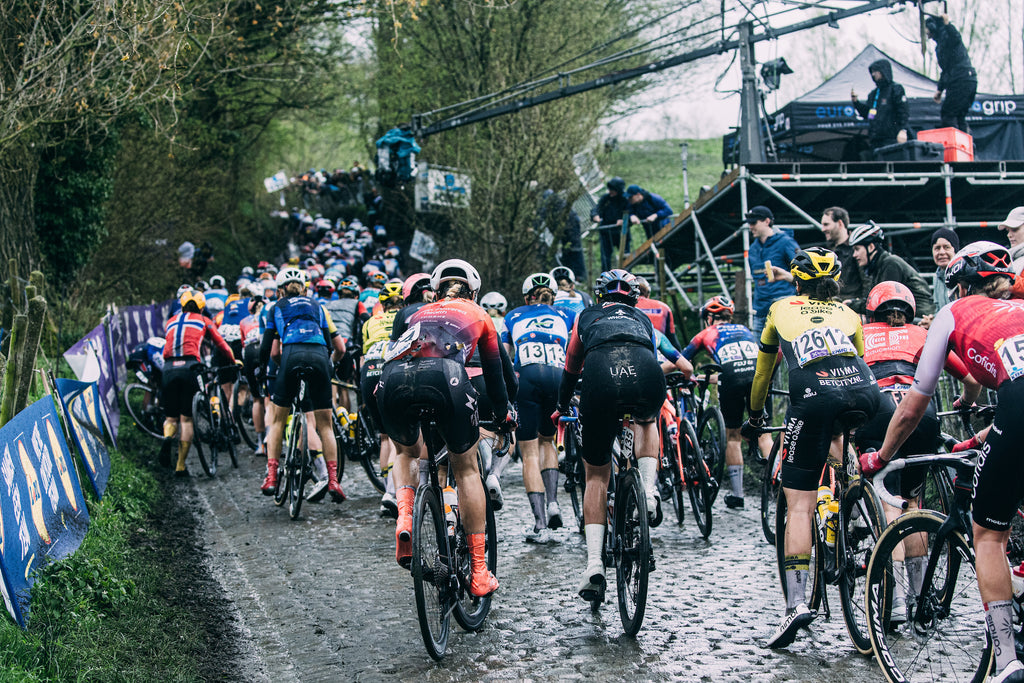‘It’s a humbling experience’ - Does the Koppenberg still have a place in the Tour of Flanders?
The cobbled climb ended up being a deciding factor in both the men’s and women’s races
There’s something tragic about seeing the world’s best bike riders slipping in their cleats as they try to run up a greasy, wet cobbled climb. They are no longer mesmerising or skilful and suddenly cut an almost comedic figure – jelly legs in funny shoes trying to get to the top of a silly, short climb in the middle of rainy Belgium on a Sunday afternoon in March. This is what the Koppenberg reduces them to. In the words of British national champion Fred Wright: “Walking up Koppenberg was a humbling experience.”
Aside from the embarrassment the riders feel about having millions of people watch them try to push their bikes over the cobbles without falling over, the Koppenberg also proved a crucially decisive point in both the men’s and women’s editions of the 2024 Tour of Flanders. If you could stay on your bike and keep things upright, as eventual race winners Mathieu van der Poel and Elisa Longo Borghini did, then you could establish an advantage on your rivals without even really having to launch a proper attack. Those who rode it still had a chance of winning; those who walked it waved goodbye to any chance at all of a good result.
But should the biggest one-day race in the world be largely decided by who can keep traction on the treacherous surface of one, short climb? Is it right that the chances of riders are scuppered based on if someone else unclips in front of them? Does the Koppenberg still have a place in the Tour of Flanders? The riders themselves have mixed opinions.
Nils Pollitt of UAE Team Emirates, who eventually finished in third place at this year’s edition of De Ronde, argued that preparation is key for the Koppenberg, which is why a rider like Van der Poel can tackle it so well.
Photo by Zac Williams/SWPix
“If you walk up there, you lose half a minute or 45 seconds. We know that Mathieu is really good at bike handling and he does a lot of ‘cross races, we saw how good his cyclo-cross season was this winter. We don’t know how many times he’s ridden the climb in the Koppenberg cross, so he knows every stone there,” Pollitt said.
Kasia Niewiadoma agreed with the German rider, pointing out that bike handling skills and positioning is a key part of bike racing – winning the Tour of Flanders is about much more than just physical ability.
“To be honest, I feel like that's part of racing – it's not only about going hard on the climbs but being able to find yourself beforehand,” the Canyon//SRAM rider said, a few moments after finishing the women’s race in second place. “I think that if you were strong enough and well positioned you didn't have to walk. Everyone knew it, and I feel like those are the challenges that we have to face. It also gives a fun element to the racing.”
Other riders were more cautious about whether the climb was a good inclusion in Flanders, especially when the conditions are as wet and miserable as they were this year.
Photo by Francesco Rachello/Tornanti.cc
“To be in front there is key, we heard from the men’s race how slippery it was and we tried to be in position. In the end, the best were in front. I think it’s a beautiful climb, it’s hard, it’s part of Flemish racing but, of course, it’s a shame when people have to walk. In these kinds of conditions, I have to say it’s on the edge,” Visma-Lease a Bike’s experienced team leader, Marianne Vos said when asked about whether the climb is too extreme in the rain.
Even Van der Poel himself, who is lauded by his colleagues for his ability to ride the Koppenberg so well, admitted he had difficulties staying on his bike in this year’s race: “It was super slippery on the Koppenberg and I had problems getting the power down. I’ve never ridden it in wet conditions and this was the first time on road tyres that I did it. It was difficult.”
Lotte Kopecky, a two-time Tour of Flanders winner who was one of the Koppenberg’s victims today after she was forced to run up the climb when a rider unclipped in front of her, pragmatically came to the conclusion that it would be better for the berg to come later in the race.
“I like the Koppenberg and it’s a nice climb but when it’s wet, like we’ve seen for two years, it should maybe be more in the final, like the Paterberg,” Kopecky said after finishing the race, still shivering from the biting winds and lashing rain that she’d battled through a few moments before. “If you go there with a group of 10 riders then it’s totally not a problem, but now you come with the whole peloton then it’s a really big fight for positions and you know if you’re not in the first 15 you probably will have to get off your bike.”
Photo by Eloise Mavian/Tornanti.cc
How each rider feels about the inclusion of the Koppenberg in Flanders largely appears to depend on their individual performance on the climb – if they rode up it, they liked it, if they were one of the unfortunate riders on foot, they didn’t. Above all, there seems to be a common acceptance that the whole peloton is in the same boat and even if they’d rather not face a wet Koppenberg, it’s not like they have much choice. The ascent of the Koppenberg in 2024 is an experience that the majority of riders seem to want to just put behind them, with the likes of Wright already aiming to refocus on Paris-Roubaix, where they will hope to manage on two wheels, rather than two feet.
“When you have blokes in front of you jumping and running, you have to do the same thing. It wasn’t the most pleasant experience. There’s something about getting off and running when you’re absolutely blowing is not very nice,” Wright said. “Chapeau to the ‘cross guys because I needed to put the bike on my shoulder and keep running. Anyway, Roubaix next week.”
Cover photo by Zac Williams/SWPix






























